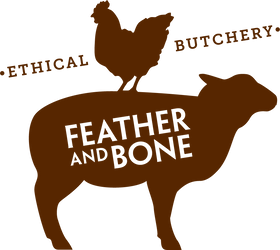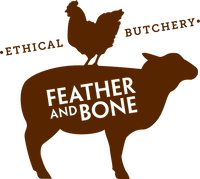Drought report: Moorlands Farm, November 2018
As the extreme weather across the country continues, the air waves are choked with heartbreaking stories of farmers brought to their knees and struggling to cope. From the city, it's hard to get a clear perspective on the scale of hardship, the causes and the possible solutions. So last November, in response to media reports of farms in crisis due to the drought, we decided to seek some perspective from the farmers with whom we work. Before you read their reports, we'd encourage you to read our introduction - 'Grass roots response to drought'.
We’ve checked in with all of the farms over the last month and it’s sobering to note that little has changed since November 2018.
Moorlands Bio-dynamic Farm
Farmers: Vince and Janet Heffernan
Location: Dalton, NSW, 2581
Produce: Texel sheep.
We started buying Moorland sheep in June 2010
13 November 2018
When did you start to realise that this drought would probably be prolonged and very serious?
September 2017, very concerned again in mid to late autumn of 2018. Our growth window is roughly 15th Aug - 15th Oct and a dry winter plus almost no rain in September until mid-October was very bad.
When did you start to take mitigating action against this drought?
September 2017 and on a number of occasions since - destocking. At the beginning of the millennial drought we had 7,800 head. Today we would have a little more than 3,000 and we’re about to sell more – 2,500 or 2,000 by Christmas? This represents a major loss of income because we’ll lose $50 - $150 a head selling now. However, the overheads in business stay the same. It’s just a huge income hole.
What are the main actions you’ve taken and strategies you’ve followed?
Destocking - see above. (F&B: In addition, the Heffernans have spent the last 15 years improving the resilience, water-holding capacity, ground cover, species diversity and general regenerative capacity of the farm.) We have some 900-1000 large poplar trees which will be cut to feed sheep over summer. Foliage is a good feed source.
What are your priorities during this period and what are your objectives (e.g. maintain a core breeding stock, maintain ground cover etc.)?
Nothing else matters more than ground cover. Maintaining that is the main/only priority. If we can keep some breeding stock, that’s great, but we cannot lose our soil and our perennial grasses by over-stocking - running more sheep than the carrying capacity which is already much-diminished due to lack of soil moisture.
What are the main challenges you’ve faced during this drought? (e.g. retaining ground cover, dealing with kangaroos etc)?
- Roos are an issue - our neighbours are less interested in looking after their soil - have bare paddocks - roos look for grass and come to our place. Wildlife is stressed, needs compassion not extinction. Water is yet to be an issue but will be this summer.
- Feeding - not replacement feeding, supplementary feeding; supplementary to the grass in paddocks. Grain is both hard to find and expensive to secure...
- Not good for us.
- Idiot politicians not engaging in climate change action (Angus Taylor, my local member - now wants ‘fair dinkum power’ which means coal but they aren't game to say coal... I hope for his young family’s sake he has secured the job in that coal industry post-political career - because it'll happen sooner than he thinks...) Disappointed/disillusioned with politicians not supporting constituents.
Have you witnessed or learned anything particular over the last year that has changed or reinforced your thinking?
Our place looks better than others in our area. Still growing grass.
How would you describe what you do and the contribution you make to Australian agriculture?
Land manager. Ecosystem manager. Also produce the best lamb we can. Not sure our/my contribution is anything significant. Easy to feel isolated and unnoticed.
What do you think the ‘City' - consumers, retailers, policy makers - should be doing in times of drought?
- Lend money - interest free. Donate money. They'll lose money during a drought, negative income, use savings/superannuation to survive, have to borrow to stay afloat...
- Tell their local politicians they need to take climate change seriously or they'll find another politician. If need be, vote in someone else. Tell them the same thing. Continue until you get some satisfaction. Do not be afraid to vote for someone you wouldn't normally vote for – it’s just a single term.
- Be willing to buy produce and pay a little more if need be.
- Buying hay is not necessarily the answer. Underfeeding stock [animal welfare], destroying the soil. Only support farmers who you think will be good land managers. Yes, be willing to be compassionate and ensure people have food, but don't prop up businesses that run in ways that are worse than unsustainable - that are destructive.
- Droughts mean extra work. ie 65 or 70 hours a week become 80 - 90 hours, no respite. Many or most 'city' people cannot run a farm; cannot repair bores/troughs/fences/electric-fences/muster stock/use dangerous gear like augers/etc.
- I think there should be farm locums. Experienced/skilled farm works/managers who could be parachuted in to give stressed, emotionally/physically exhausted farmers some break. A fortnight [even a week] a year or every few years... Some city people get weekends or even annual holidays – this is not possible for drought-affected farmers.
- Concerned city people might be able to help with less glamorous work that isn't getting done due to other priorities. ie; working beside the farmer. In an organic system that might be weeding which is hard physical work and not for faint hearted, but the sort of work unskilled people can do under supervision... Farmers are understandably reticent to ask for help and this would have to be managed as a mutually respectful and beneficial exchange that doesn’t impose additional work, cost or stress on the farmer. The city person gains a closer connection to their food source, a great experience and makes a real contribution. The farmer gets much-needed help.
Below is a photo of Moorlands farm taken in November 2018 showing that, despite severely-low rainfall and punishing conditions, grass can grow given the right conditions. Following the Moorlands photo are a series of photos from other farms showing devastingly-barren pastures.
In summary, all these farmers could be doing better. Do they deserve your support? No.
Below: Moorlands paddock - grass green and growing despite the extended drought

Below, neighbouring farm photo near Moorlands. This farm has looked appalling since February 2018. Stock underfed, paddocks overgrazed.
Below, a second neighbouring farm photo near Moorlands. Includes some of the road edge to show that these paddocks could have grass and the grass is green and growing. Bare ground with starving animals grows no grass.
Below, a third neighbouring farm photo near Moorlands. Distressingly bare (where possible, Vince drives this way after dark so he doesn’t have to see it). Again, showing grass on the road, green and growing. There has been a little rain but grass can grow in the right conditions.
Below, a fourth neighbouring farm photo near Moorlands. Very depressing photo. Trees knocked down, erosion, very bare paddock on which young cattle are trying to survive. Major animal welfare issues.








Leave a comment